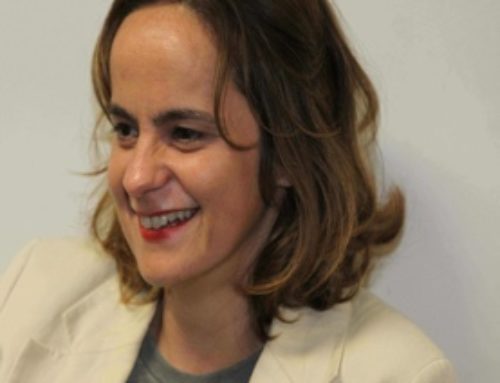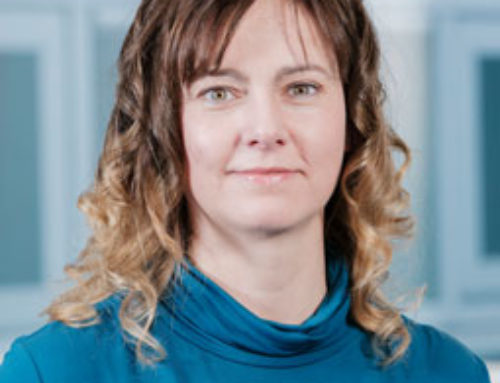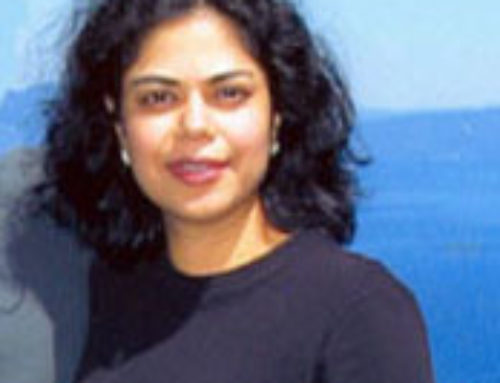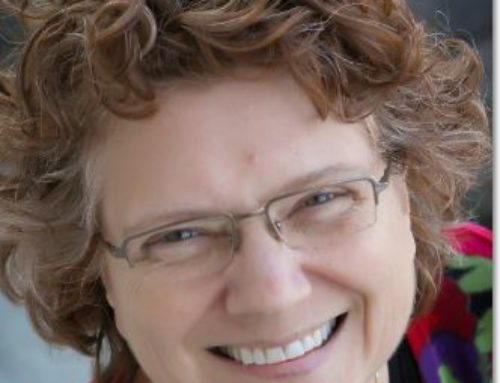HETL Note: We are very pleased to inaugurate The HETL Portal and Review with our first article by the distinguished Dr. John M. Carfora, Ed. D., who delivers a thought-provoking piece on the interplay between teaching and research and its potential for creating effective learning environments. Dr. Carfora deftly surveys the perennial question: How can we create effective learning environments where teaching and research intersect in a complementary and mutually beneficial way? If you would like to continue the discussion, please submit your own article on the topic (see the Submissions page on this portal for submission requirements). You may submit your own article on the topic or you may submit a “letter to the editor” of less than 500 words (see the Submissions page on this portal for submission requirements).
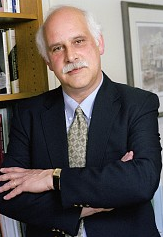 Author’s Bio: Professor John M. Carfora, Ed. D., is the Associate Vice President for Research, Advancement and Compliance at the Loyola Marymount University, Los Angeles (USA). Dr. Carfora holds graduate degrees from a number of universities, including the London School of Economics, Harvard University, and a doctorate from Teachers College, Columbia University. A recipient of several international research awards, Dr. Carfora has lectured throughout the United States, Europe, Canada and Africa. Dr. Carfora was a Research Scholar at Radio Free Europe-Radio Liberty in Munich, Germany, in the 1970s, where he authored studies on social, economic and political themes for radio broadcasts in Russian and other languages. Dr. Carfora served as Director of International Education at the Russian Academy of Management in Moscow, and was the founding Curator of the Sir Leonard Bertram Schapiro Collection at the British Library of Political and Economic Sciences (London). Dr. Carfora served as an IREX Fellow to the former Soviet Union in the early 1980s, received the Distinguished Service Award from the National Council of University Research Administrators in 2007, and served as a Fulbright Scholar to Ireland in 2009. His specialties are humor and laughter. Dr. Carfora can be reached at [email protected]
Author’s Bio: Professor John M. Carfora, Ed. D., is the Associate Vice President for Research, Advancement and Compliance at the Loyola Marymount University, Los Angeles (USA). Dr. Carfora holds graduate degrees from a number of universities, including the London School of Economics, Harvard University, and a doctorate from Teachers College, Columbia University. A recipient of several international research awards, Dr. Carfora has lectured throughout the United States, Europe, Canada and Africa. Dr. Carfora was a Research Scholar at Radio Free Europe-Radio Liberty in Munich, Germany, in the 1970s, where he authored studies on social, economic and political themes for radio broadcasts in Russian and other languages. Dr. Carfora served as Director of International Education at the Russian Academy of Management in Moscow, and was the founding Curator of the Sir Leonard Bertram Schapiro Collection at the British Library of Political and Economic Sciences (London). Dr. Carfora served as an IREX Fellow to the former Soviet Union in the early 1980s, received the Distinguished Service Award from the National Council of University Research Administrators in 2007, and served as a Fulbright Scholar to Ireland in 2009. His specialties are humor and laughter. Dr. Carfora can be reached at [email protected]
Patrick Blessinger and Krassie Petrova
~~~~~~~~~~~~~~~~~~~~~~~~~~
Navigating Between Teaching, Learning and Inquiry
John Carfora
Loyola Marymount University, Los Angeles, USA
When Patrick Blessinger asked me to sketch a reflective narrative around teaching and research, I did so with the intent of stimulating some meaningful discussion on a perennially debated theme. I hope you will find some meaning in this brief reflection.
Following a recent move from Northampton, Massachusetts, to Los Angeles, California, I was going through some old boxes with a certain degree of excitement, the kind one might expect from a “sixty-something” year old academic still excited by intelligent questions, empirical research and the methodology of inquiry, reflective teaching, and the meaningful pursuit of learning through the life span. I immediately recognized one box as if it were a personalized time capsule; metaphorically written across its top in familiar handwriting was: Teaching, Learning, Inquiry.
My Pedagogical Formula
 Opening the sacred container – which I started building when I was 28 and a youthful American lecturer pursuing my craft at an English institution of higher learning – I immediately came across an engraved crystal bowl I received for university-level teaching (when I was in my 40s). Resting inside, however, I found the one key item I was especially delighted to rediscover: a postcard of the Shakespeare monument at Leicester Square (circa 1978), and a pedagogical formula I wrote to myself one autumn day while sitting at the base of the Bard himself: Teach to navigate between inquiry and knowledge. All these years later, I still wondered what I was truly trying to proclaim, and looking back I realize the extent to which those words launched a thousand ideas which would occupy my thinking about teaching and learning for years to come. One might say I have been thinking “outside the box” for decades.
Opening the sacred container – which I started building when I was 28 and a youthful American lecturer pursuing my craft at an English institution of higher learning – I immediately came across an engraved crystal bowl I received for university-level teaching (when I was in my 40s). Resting inside, however, I found the one key item I was especially delighted to rediscover: a postcard of the Shakespeare monument at Leicester Square (circa 1978), and a pedagogical formula I wrote to myself one autumn day while sitting at the base of the Bard himself: Teach to navigate between inquiry and knowledge. All these years later, I still wondered what I was truly trying to proclaim, and looking back I realize the extent to which those words launched a thousand ideas which would occupy my thinking about teaching and learning for years to come. One might say I have been thinking “outside the box” for decades.
Along with the crystal bowl and postcard were pictures from the event itself, and I readily recognized the smiles and aspirations of the students around me, holding what I now metaphorically see as a “crystal ball” of sorts. Also in the bowl was a thank you letter a student sent me in the 1980s, which ended with the following: “Throughout the course you always respected our judgment by asking a very important question: What do you think, and how best would you state it?”
When I first began lecturing as a postgraduate assistant in England, I worked closely with a well-known professor at the London School of Economics, who one day responded to a question I put to him – specifically, what is your secret to good university-level lecturing? – by quoting Kahlil Gibran (Note 1) as if he was speaking his own words: The teacher who is indeed wise does not bid you to enter the house of his wisdom but rather leads you to the threshold of your mind.
Years later, and not too long before he passed away, we were talking about “transformative teaching,” and he reflectively stated: Lectures should be interesting and inspiring; classroom dynamics should be sophisticatedly managed, should never be a place for uninformed improvisation or entertainment, and should take place in an environment where learners can engage learning in an exhilarating and intelligent manner. For those of us committed to teaching and who seek to perfect our pedagogy every time we lecture and help guide student development, our skill is measured by the degree to which we help create and sustain that environment.
In the early 1990s I was invited to speak at a European university on a particularly attractive if somewhat broad theme: The intersections and integration of learning, teaching, research, and scholarly formation. The title I chose for my presentation was Navigating Between Teaching, Learning and Inquiry. The talk generated a lot of interest, and several months later I was asked to make a similar presentation at an American-based university, and chose the same thematic title. This talk also generated interest and was equally well-received. In this later case, however, I found myself somewhat frustrated when it became evident to me that some attendees were hoping to use the occasion to revive old intra-institutional debates about teaching having primacy over research, as if the two were mutually exclusive. As I overheard one faculty member declare to another: We are a teaching institution, not a research-intensive university where teaching is not as important. This episode left me somewhat dispirited, so I decided to explore my own position around the intersections of teaching, research, scholarship, and learning.
I began by meeting and speaking with two noted academics – Dr. Arthur W. Chickering (Goddard College) and the late Dr. C. Roland Christensen (Harvard University) – both of whom assured me that, to paraphrase the substance of our discussions: Good teaching and scholarly research should work in unity – and not against each other – and both should encourage and support independent thinking among students. The learned teacher-scholar is proficient in both teaching and research, and recognizes that scholarly research informs good teaching the same way that good teaching clearly integrates meaningful research and the craft of research. Indeed, research has a comfortable and honored place in university-level teaching, and the academy thus recognizes the extent to which effective and meaningful teaching fully encourages and supports independent thinking based upon scholarly inquiry.
Consonant with the above, I recently wrote with my friend and distinguished colleague Dr. Arnold Shore about the Responsible Conduct of Scholarship (RCS), and the following quote from our work together certainly reflects my current – if somewhat “applied thinking” – on the intersections of teaching, research, scholarship, and learning:
RCS can usefully represent our commitments as a community of scholars to the highest standards of pedagogy and teaching, creative activity, and research, where the last can take many forms – from synthesis of bodies of classical literature to comprehensive quantitative studies to the collection and analysis of empirically-based qualitative interview data. The ground rules in all cases of scholarship are essentially the same. They are the standards of honesty and care with information, respect for animate subjects, the hewing to standards of analysis and interpretation that allow others to replicate our studies through a rereading of literature or the reanalysis of data or the rerunning of experiments and construction of new data sets (pp. 68-69, Note 2).
And so for almost four decades I have been committed to helping myself and others (in the USA and abroad) create classroom-based learning environments and experiences where teaching, empirical research, and inquiry-based learning intersect inside and outside the classroom. Indeed, such learning environments can help students become increasingly involved in meaningful research, and can support and nurture settings where teaching and research are viewed as synergistically complementary, and not in competition with each other.
The Reality of Inquiry-based Learning
What might then the aforementioned narrative look like in action? To begin, however, I would like to share several points en route to an answer. First, as faculty we initially encounter students who register for our classes wanting (perhaps a bit reluctantly in some cases) to partake in the very classroom learning environments we have crafted with thoughtfulness and care. The university makes our course outlines available to the student community, and ultimately we will help create such learning environments in collaboration with our students.
Second, as teacher-facilitators we must pay critical attention to our lecturing from the start, for the classroom represents a formative marketplace of ideas where students come to engage classroom-based learning, along with the science of research and the art of communication. In truth, many (if not most) students may come to us from previous classroom-based educational settings where inquiry-based research may not have been taught in a meaningful manner.
Third – and by way of an answer – teaching is thus the ultimate medium through which we as faculty can and should introduce students to the world of inquiry, empirical research, and scholarly based knowledge production. Not all students will enjoy these delights of course, but they should nevertheless be quite familiar with such delicacies.
Food for Thought and Discussion
As stated earlier, effective learning environments can help students become increasingly involved in meaningful research, and can support and nurture settings where teaching and research are viewed as synergistically complementary, and not in competition with each other. How might one graphically capture this relationship? Thoughts and ideas appreciated.
Finally below you will find – a very small, but nevertheless broad list of works I recommend, particularly for younger faculty, remembering that there are many more just waiting to be discovered.
John M. Carfora
References
Bain, K. (2004). What the best college teachers do. Cambridge, MA: Harvard University Press.
Brinkley, A., Dessants, B., El-Fakahanym, E., Flamm, M. , Forcey, C., Jr., Quellett, M. L., & Rothschild, E. (1999). The Chicago handbook for teachers: A practical guide to the college classroom. Chicago: University of Chicago Press.
Brookfield, S. (1995). Becoming a critically reflective teacher. San Francisco: Jossey- Bass.
Brookfield, S. D. (2006). The skillful teacher: On technique, trust, and responsiveness in the classroom (2nd ed.). San Francisco: Jossey-Bass.
Christensen, C. R., Garvin, D. A., & Sweet, A. (Eds.). (1991). Education for judgment: The artistry of discussion leadership. Boston: Harvard Business School Press.
Davis, B. C. (2009). Tools for teaching. San Francisco: Jossey-Bass.
Eble, K. (1988). The craft of teaching. San Francisco: Jossey-Bass.
Fink, L. D. (2003). Creating significant learning experiences: An integrated approach to designing college courses. San Francisco: Jossey-Bass.
Huber, M. T., & Hutchings, P. (2005). The advancement of learning: Building the teaching commons. A Carnegie Foundation Report on the Scholarship of Teaching and Learning in Higher Education. San Francisco: Jossey-Bass.
McKeachie, W. J., & Svinicki, M. (2006). Teaching tips: Strategies, research, and theory for college and university teachers. Boston: Houghton Mifflin.
Sternberg, R. J. (1997). Thinking styles. New York: Cambridge University Press.
Weimer, M. (2002). Learner-centered teaching: Five key changes to practice. San Francisco: Jossey-Bass.
Notes
- Kahlil Gibran (1883-1931): A renown Lebanese-American writer and artist. Source: http://www.library.cornell.edu/colldev/mideast/gibrn.htm
- Shore, A. R., & Carfora, J. M. (2011). The art of funding and implementing ideas: A guide to proposal development and project management. Thousand Oaks, CA: SAGE Publications.
Suggested Citation:
Carfora, J. M. (2011). Navigating Between Teaching, Learning and Inquiry. The International HETL Review. Volume 1, Article 1, https://www.hetl.org/opinion-articles/teaching-learning-inquiry/
Copyright © [2011] John M. Carfora
The author(s) assert their right to be named as the sole author(s) of this article and the right to be granted copyright privileges related to the article without infringing on any third party rights including copyright. The author(s) retain their intellectual property rights related to the article. The author(s) assign to HETL Portal and to educational non-profit institutions a non-exclusive license to use this article for personal use and in courses of instruction provided that the article is used in full and this copyright statement is reproduced. The author(s) also grant a non-exclusive license to HETL Portal to publish this article in full on the World Wide Web (prime sites and mirrors) and in electronic and/or printed form within the HETL Review. Any other usage is prohibited without the express permission of the author(s). All images are used with permission and/or under a copyright license.
Disclaimer
Opinions expressed in this article are those of the author, and as such do not necessarily represent the position(s) of other professionals or any institutions.

